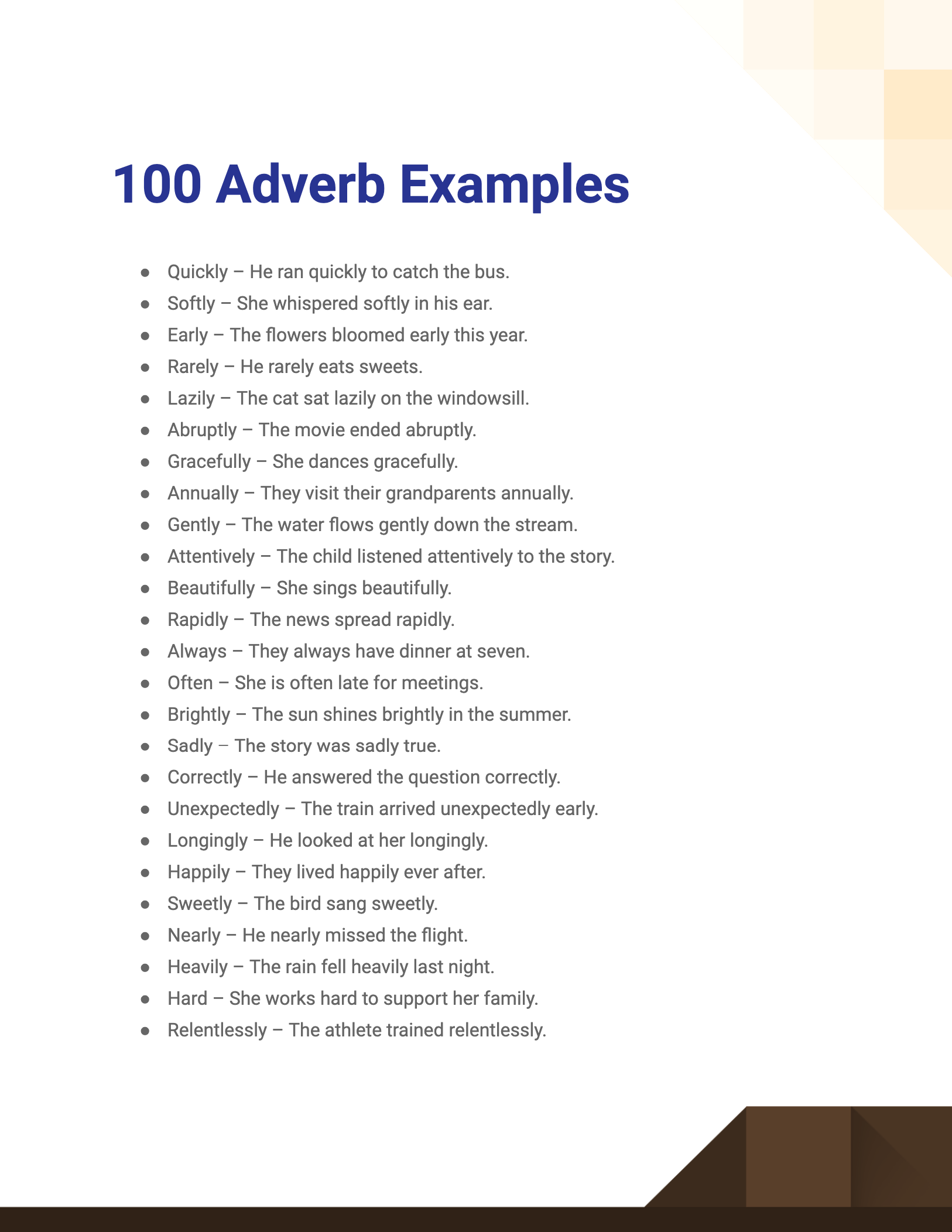Adverbs are an important part of speech that modify verbs, adjectives, or other adverbs. They provide more information about how an action is performed, when it is done, or to what extent. Understanding adverbs and their usage can help improve the clarity and precision of your writing.
There are many types of adverbs, each serving a different purpose in a sentence. Some adverbs indicate time, place, manner, frequency, or degree. Below are examples of adverbs in different categories:
Examples of Adverbs
Manner: She sings beautifully.
Time: They arrived early.
Place: He looked everywhere.
Frequency: They often go hiking.
Degree: It is extremely hot today.
Adverbs can also be used to modify adjectives or other adverbs to provide more detail or information in a sentence. For example, “very,” “extremely,” “quite,” and “too” are adverbs that modify adjectives like “happy” or “cold.” In the sentence, “She is very happy,” the adverb “very” modifies the adjective “happy” to show the degree of her happiness.
It is important to be careful with the placement of adverbs in a sentence to ensure clarity and meaning. Adverbs usually come after the verb they modify, but they can also be placed at the beginning or end of a sentence for emphasis. For example, “He quickly ran to the store” emphasizes the speed of his action, while “Quickly, he ran to the store” emphasizes the urgency of his action.
Using adverbs effectively can enhance the quality of your writing by providing more information and detail to your sentences. By incorporating a variety of adverbs in your writing, you can create more vivid and engaging descriptions that paint a clearer picture for your readers.
In conclusion, adverbs play a crucial role in enriching the language and conveying precise meanings in writing. By understanding the different types of adverbs and how they function in sentences, you can improve your writing skills and communicate more effectively. Experiment with using adverbs in various ways to add depth and clarity to your writing.
